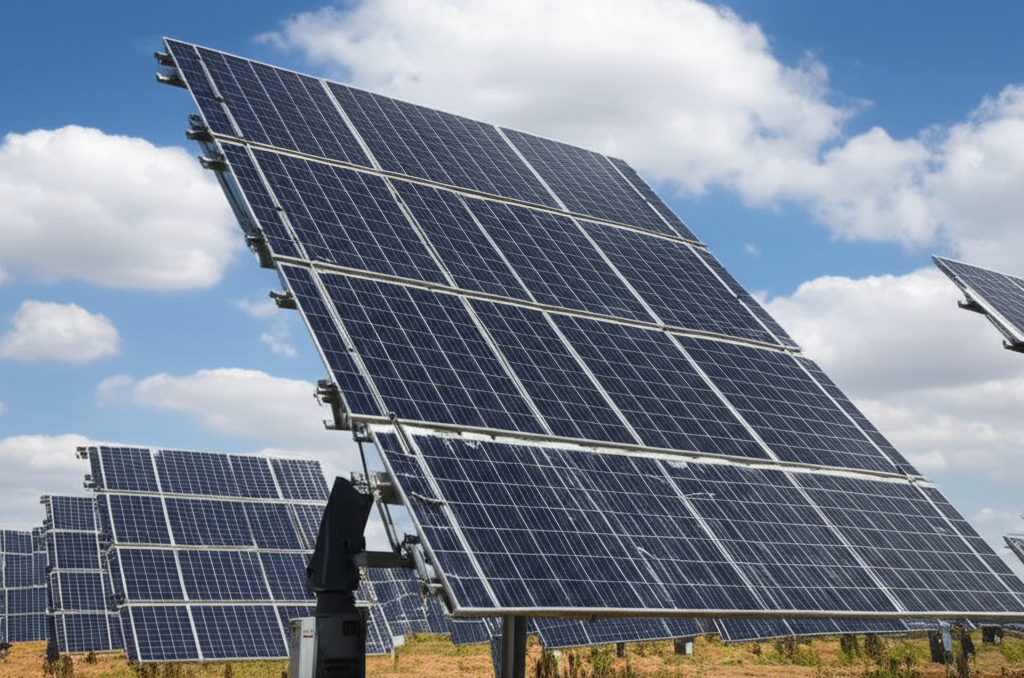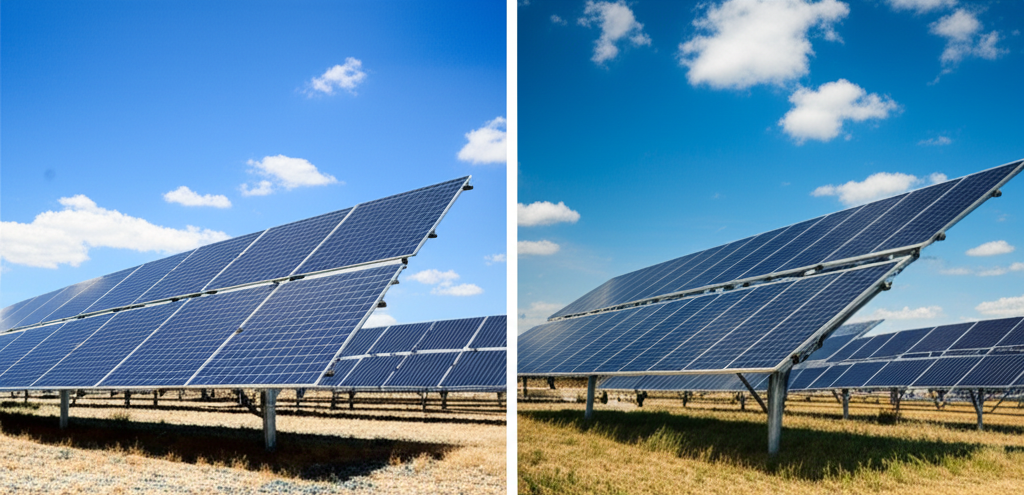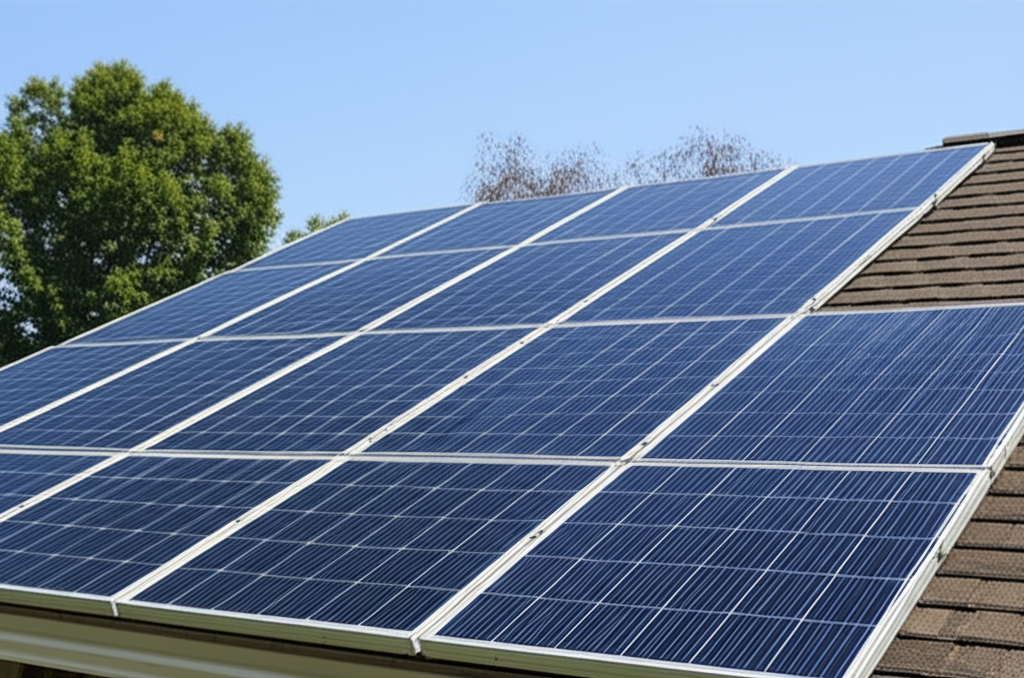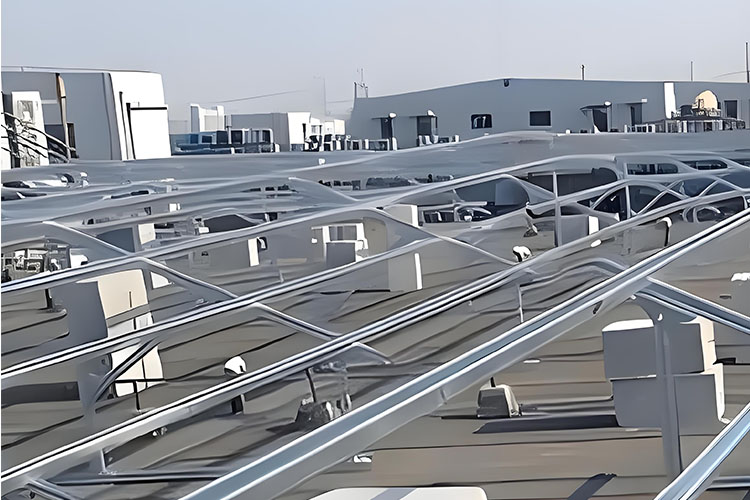Sie wollen vorhersehbare Erträge aus Ihren Solaranlagen. Sie wollen auch weniger Frustrationen bei der Wartung und Instandhaltung. Nachführsysteme können wie ein weiteres bewegliches Bauteil erscheinen. Sie können sich wirklich gefährlich anfühlen. Aber hier ist die Wahrheit. Moderne Nachführsysteme erhöhen den Energieertrag, senken die Gesamtbetriebskosten und reduzieren die Betriebskosten über die gesamte Lebensdauer, wenn Sie das richtige System auswählen und es mit Selbstkontrolle betreiben.
Verständnis der Solarnachführung: Wie sie funktioniert und warum sie wichtig ist
Solarnachführsysteme richten PV-Komponenten über den Tag hinweg auf die Sonne aus. Einachsige Nachführsysteme drehen sich um eine Achse. Zweiachsige Nachführsysteme folgen dem Azimut und der Höhe. Die Steuerungen nutzen astronomische Formeln und Kommentare der Sensoreinheiten, um die Komponenten für eine optimale Bestrahlungsstärke zu positionieren. Eine exzellente Nachführung verringert die Abschattung, verbessert die Erfassung von diffusem Licht und sorgt für Windstau, um die Sorte bei Stürmen zu schützen.

Was bedeutet das für die Rendite? Unabhängige Forschungsstudien zeigen, dass einachsige Nachführsysteme in der Regel einen Energiezuwachs von etwa 15 - 25% gegenüber der reparierten Neigung bringen. Zweiachsige Systeme können je nach Breitengrad und Auslegung 25 - 35% erreichen. Wenn Sie Nachführsysteme mit bifazialen Komponenten kombinieren, können Sie bei entsprechender Bodenalbedo weitere 5 - 15% aus der rückseitigen Verstärkung gewinnen. Zusätzliche Kilowattstunden pro montiertem Watt senken die Stromgestehungskosten bei Versorgungsaufgaben um etwa 5 - 10%, wenn der Standort und das Design optimiert sind.
SolPath von Jinwu Xuanhui Technology Co. Ltd. entwirft intelligente Nachführsysteme, die diese Vorteile in Reichweite bringen. Sie erhalten eine schattenresistente Nachführung, die die Abschattung von Reihe zu Reihe reduziert. Sie erhalten eine Ferninbetriebnahme und OTA-Upgrades (Over-the-Air), die den Preis für weiche Produkte senken. Sie erhalten Steuerungen, Aktuatoren und Platzierung aus einer einzigen Lieferkette für eine schnellere Lieferung und eine weniger komplexe Assimilation.
Mythos 1: “Tracker sind zu teuer, um den ROI zu rechtfertigen”
Kapitalkostenerhöhungen fühlen sich wirklich beängstigend an. Sie haben Respekt vor der Amortisation. Doch der ROI hängt von der Energieausbeute während der gesamten Lebensdauer und den Gesamtkosten des Besitzes ab.
- Einachsige Nachführung umfasst 15 - 25% Leistung gegenüber der Neigung an mehreren Standorten - Zweiachsige Nachführung kann unter den besten Bedingungen 25 - 35% liefern - Optimierte Nachführung senkt die LCOE um etwa 5 - 10% bei Projekten im Versorgungsmaßstab
Wo ist das zu erwarten? Mittlere Breiten mit hoher DNI. Standorte mit günstigen Windverhältnissen und Geotechnik. Anlagen, die mit jeder zusätzlichen kWh über PPA-Bedingungen oder Handelsmärkte Einnahmen erzielen. Bifacial-Komponenten auf Trackern können den rückseitigen Gewinn verbessern und so die Wirtschaftlichkeit erhöhen.
ROI-Schnappschuss: Festnetz vs. Tracking (illustrativ)
| Szenario (100 MWdc) | Energiegewinn vs. Fix | Geschätzte LCOE Delta | Indikatives Amortisationsfenster |
|---|---|---|---|
| Feste Neigung Grundlinie | — | — | — |
| Einachsiger Tracker | +15–25 % | -5-8% | 4-7 Jahre |
| Zwei-Achsen-Tracker | +25–35 % | -8-10% | 5-8 Jahre |
Die Zahlen zeigen Marktsorten aus unabhängigen Standards. Die endgültigen Zahlen werden von Ihrer Website bestimmt.
Der Wert von SolPath liegt in mehr als Stahl und Motoren. Schattenresistente Algorithmen reduzieren Fehlanpassungsverluste. Die Fernbestellung verkürzt die Montagezeit. OTA-Updates ermöglichen Effizienzverbesserungen in der gesamten Flotte, ohne dass der LKW rollen muss. Diese Kombination erhöht die Rendite und verringert die weichen Kosten, was die Rückzahlung reduziert.
Umsetzbare Schritte:

- Modellieren Sie den Ertrag mit standortspezifischen TMY-Daten und berücksichtigen Sie Annahmen zur bifacialen Rückseite.
- LCOE mit vernünftigen Betriebs- und Wartungskosten und zusätzlicher Strategie betreiben.
- Validierung der Struktur und des Windstauungsdesigns anhand von Nachbarschaftsvorschriften und Böenberechnungen.
Wenn Preiskontrolle Ihre oberste Priorität ist, sollten Sie SolPaths Kosteneffektiver Tracker Alternativen für die vorgestellten Umsetzungen.
Mythos 2: “Tracker gehen häufig kaputt und müssen ständig gewartet werden”
Ältere Systeme kämpften. Moderne Nachführsysteme haben das nicht. Marktinformationen zeigen, dass die jährlichen Wartungskosten für moderne Nachführsysteme in der Regel unter 1% der anfänglichen Investitionskosten liegen, wenn Sie vorausschauende Wartung und intelligente Steuerungen einsetzen Integrität steigt mit weniger komplexen Antriebssträngen, abgedichteten Getrieben und robusten Steuerungen.
SolPath-Tracker nutzen geschlossene Regelkreise und astronomische Positionierung. Die Systeme speichern bei starkem Wind, um Strukturen zu schützen. Schneeräumungsmodi und Antischattenregelungen verbessern die Zugänglichkeit bei schwierigen klimatischen Bedingungen. Die Fernüberwachung zeigt Ausnahmen schnell an. OTA-Firmware-Updates liefern Lösungen und Eigenschaften ohne Arbeit vor Ort.
O&M-Profil: Feststehend vs. nachgeführt (typische Bereiche)
| System Type | Jährliche O&M als % der Investitionskosten | Schwerpunkt Wartung |
|---|---|---|
| Fixed Tilt | ~0,5-1,0% | Modulreinigung und Elektrik |
| Einachsig | ~0,8-1,0% | Schmierung, Antriebskontrolle, Firmware |
| Zwei Achsen | ~1,0-1,2% | Zusätzliche Inspektionen und Kalibrierung der Verbindungen |
Die Sorten sind marktüblich und können je nach Website und Technik variieren.
Feinste Methoden, die die Betriebszeit hoch halten:
- Verwenden Sie eine zustandsabhängige Schmierung anstelle von gepflegten Zeitplänen.
- Trendmotorströme und Platzierungsfehler, um Verschleiß frühzeitig zu erkennen.
- Validieren Sie die Windstau- und Heilungsserien in jeder Periode.
- Standardisierung von Zusatzausrüstungen für Stellantriebe und Steuerungen.
Wünschen Sie sich eine strukturierte Instandhaltungsstrategie? Siehe SolPaths Installationswartung Unterstützung für Listen und Punkte.

Mythos 3: “Tracking verbessert kaum die Energie, also ist fixiert in Ordnung”.”
Reparierte Neigung kann einige Seiten gut dienen. In zahlreichen Bereichen siegt die Spurensuche nachdrücklich.
- Einachsig: +15 - 25% Energie gegenüber behandelter Neigung - Zweiachsig: +25 - 35% Energie gegenüber der behandelten Neigung - Bifacial + einachsig: zusätzlich +5 - 15% je nach Albedo und Reihenabstand
Der Standort ist wichtig. Niedrige Breitengrade und klarer Himmel begünstigen die Nachführung. Diffuse Umgebungen sind immer noch von Vorteil, da die Steuerungen für die Lichtverteilung optimiert werden können. Große Reihenabstände und die schattenresistente Nachführung von SolPath verringern die Abschattung zwischen den Reihen, so dass Sie am frühen Morgen und am späten Mittag viel mehr ernten können.
Energiegewinn nach Ansatz (Benchmarks der Industrie)
| Näherung | Energiegewinn gegenüber fester Neigung |
|---|---|
| Fixed Tilt | — |
| Einachsige Verfolgung | +15–25 % |
| Zweiachsiges Tracking | +25–35 % |
| Einachsig + Bifacial | +20-40% insgesamt vs. fest (kombiniert) |
Aus unabhängigen Aufzeichnungen zusammengestellte Daten Website-Probleme kontrollieren letzte Gewinne.
Wenn Rendite Ihr Nordstern ist, erkunden Sie SolPaths Intelligenter Tracker Auswahlmöglichkeiten zur Feinabstimmung der Winkel für diffuses Licht und Rückseitenverstärkung.
Mythos 4: “Tracker sind nur für große Versorgungsprojekte”
Projekte von Versorgungsunternehmen führen die Einführung an. Das ist richtig. Kleinere Anwendungen können profitieren, wenn die Probleme passen.
- Gewerbliche Dächer mit großen Spannweiten und architektonischen Möglichkeiten.
- Freistehende gewerbliche Hinter-dem-Zähler-Standorte mit Nutzungszeittarifen.
- Landwirtschaftliche und netzunabhängige Systeme, die den Nachmittagsertrag belohnen.
SolPath bietet skalierbare Modelle für die verteilte Erzeugung und besondere Nischenanwendungen. Werfen Sie einen Blick auf Kommerzieller Tracker Dienstleistungen, wenn Ihre Website einen Bodenbereich hat. Entdecken Sie Landwirtschaftlicher Tracker Anwendungsfälle für Ranches, die in den Nebenzeiten mehr Strom benötigen. Für die Ausfallsicherheit von abgelegenen Standorten sollten Sie Folgendes in Betracht ziehen Offgrid-Tracker.
Die Eignung der Website ist immer noch ausschlaggebend für die Wahl. Sie wünschen sich angemessene Störungen, geringe Beschattung, ein geeignetes Windprogramm und kostengünstige Strukturen. Wenn Sie diese Kriterien erfüllen, können Sie eine Nachführung außerhalb des Versorgungsbereichs gewährleisten.
Mythos 5: “Tracker sind nicht umweltfreundlich und verschwenden Quellen”
Nachführanlagen sorgen für zusätzlichen Stahl und Kontrollen. Außerdem erhöhen sie die Energie pro Acre, was den Flächenbedarf pro gelieferter kWh verringert. Ein höherer Ertrag senkt die LCOE für den Arbeitsplatz. Dieser Rückgang reduziert die Lebenszykluskosten pro kWh, da sich die Auswirkungen der Herstellung auf mehrere Generationen verteilen. Bifacial-Komponenten steigern die rückseitige Ernte ohne zusätzliche aktive Komponenten.
SolPath-Layouts für Langlebigkeit und eine lange Lebensdauer. Die Steuerungen erhalten OTA-Updates, die die Leistungsfähigkeit ohne Gerätetausch verlängern. Die schattenresistente Nachführung minimiert die Ungleichheit, was dazu beiträgt, dass die Module näher am Kopf laufen. Das bedeutet eine bessere Energieerfassung über Jahrzehnte.
Wenn Nachhaltigkeit für Ihr Programm wichtig ist, lesen Sie bitte SolPaths Umweltfreundlicher Tracker Ansatz für Produkte und Lebenszyklusüberlegungen.
Die Wahl des richtigen Solar-Nachführsystems
Ihre Wahl bestimmt ROI und Risiko. Beginnen Sie mit den Anforderungen des Standorts und der Organisation.
- Standort und Breitengrad bestimmen die Leistungssteigerung.
- Wind- und Schneelasten prägen die architektonische Gestaltung und die Überlegungen zur Lagerung.
- Boden und Geotechnik bestimmen den Preis des Bauwerks.
- Zusammenschaltung und SCADA spezifizieren Assimilierungsarbeiten.
- Der bifaciale Ansatz beeinflusst den Reihenabstand und die Albedobehandlung.
- Zielverfolgung dort, wo der Breitengrad und die Himmelsbedingungen den Ertrag sinnvoll erhöhen.
- Koppeln Sie Nachführsysteme mit bifazialen Komponenten für zusätzliche Energie bei entsprechenden Bodenproblemen.
- Entwerfen Sie den Windstau sehr sorgfältig und prüfen Sie die Wiederherstellungsreihen, um die Betriebszeit zu sichern.
- Nutzen Sie Ferninbetriebnahme und OTA-Updates, um die Kosten zu minimieren und die Effizienz mit der Zeit zu steigern.
- Budget für O&M bei oder unter 1% der Investitionsausgaben mit vorausschauender Wartung und Standard-Ersatzteilen
- Funktionieren Solar-Tracker auch an trüben Tagen?.
- Wie viel kostet ein Solar-Tracker-System?.
- Wie hoch ist die Lebenserwartung eines Solartrackers?.
- Kann ich einen Solartracker zu bestehenden Solarmodulen hinzufügen?.
- Fordern Sie eine standortspezifische Ertrags- und LCOE-Bewertung für einachsige vs. zweiachsige Anlagen an.
- Prüfen Sie geotechnische und windbedingte Probleme, bevor Sie den architektonischen Entwurf abschließen.
- Planen Sie Ihr O&M-Programm mit zustandsorientierter Wartung und OTA-Updates vom ersten Tag an.
- Moderne Nachführsysteme arbeiten auch bei schlechtem Wetter zuverlässig mit Windstopp- und Schneeschutzeinstellungen. Fernüberwachung und OTA-Upgrades verringern manuelle Eingriffe und den Wartungsaufwand. Zweiachsige Nachführsysteme können unter günstigen Bedingungen bis zu 20 - 40% erreichen, während einachsige Nachführsysteme in der Regel 15 - 30% liefern, wie aus der Artikeldokumentation und Branchenstudien hervorgeht. SolPath-Systeme bieten eine intelligente, schattenresistente Nachführung, Fernsteuerung und eine vollständige Abdeckung der Lieferkette für Nachführsysteme, Steuerungen und Montage.
Schneller Vergleich: Einachsig vs. zweiachsig
| Feature | Einachsig | Zwei Achsen |
|---|---|---|
| Yield Gain vs Fixed | +15–25 % | +25–35 % |
| CAPEX | Untere | Höher |
| O&M Complexity | Untere | Höher |
| Beste Passform | Versorgungsunternehmen und große C&I | Spezialisierte Websites oder hochwertige Nischen |
| Bifaziale Synergie | Stark | Stark |
SolPath unterstützt die End-to-End-Zustellung. Sie erhalten Tracker, Steuerungen und Installation in einem Programm. Die Lösungen sind mit gängigen PV-Modulen und Wechselrichtern kompatibel. Die Controller ermöglichen eine Ferninbetriebnahme und OTA-Upgrades, die den Arbeitsaufwand reduzieren und die Stromzufuhr beschleunigen. Für Skala lesen Sie über Tracker für Versorgungswaagen Abhilfemaßnahmen. Für Entscheidungen auf Komponentenebene erkunden Sie Tracker-Komponenten.
Practical Takeaways
Ja. Die Steuergeräte verwenden teure Algorithmen, um Streulicht auszugleichen. Sie gewinnen immer noch aufgrund der Tatsache, dass der Bereich einen optimalen Winkel über die Streubestrahlung hält.
Die Kosten variieren je nach Standort und Strukturauswahl. Einachsige Anlagen verursachen in der Regel nur geringe Investitionskosten im Vergleich zu reparierten Neigungsanlagen, erhöhen jedoch die Energiemenge um 15 - 25%, was die Stromgestehungskosten in der Regel um 5 - 8% senkt.
Die Lebensdauer des Layouts entspricht oft der Lebensdauer der PV-Module im Bereich von 20 bis 25 Jahren. Aktuatoren und Steuerungen folgen festgelegten Austauschzyklen. Vorausschauende Wartung verlängert die Lösungsintervalle und reduziert Ausfallzeiten
Die Nachrüstung von Freiflächenanlagen ist möglich, wenn die Strukturen und Freiräume dies zulassen. Die Anpassung an vorhandene Wechselrichter und SCADA ist einfach, wenn Sie gemeinsame Benutzeroberflächen verwenden. Eine Standortanalyse prüft die Machbarkeit und die Kosten.

Nächste Schritte
Ich bin gespannt, wie das Tracking Ihre Zahlen verändert.
Entdecken Sie SolPaths Tracker für Versorgungswaagen Zeitplan. Oder beginnen Sie mit einem budgetfreundlichen Weg über unser Kosteneffektiver Tracker. Wenn Sie eine reibungslose Installation und reduzierte Lebenszeitkosten benötigen, greifen Sie zu Installationswartung.
Verweise
Grand View Research. Solar Tracker Market Size, Share & Trends Analysis Report. Januar 2024.
Fraunhofer ISE. Bestehende und zukünftige Leistung von PV-Modulen und -Systemen. Januar 2024.
BloombergNEF. Nivellierte Kosten für Elektrizität 2023.
Wood Mackenzie. Global Solar PV Tracker Market Shares and Shipments H1 2023.
NREL. Bifacial PV mit Nachführung: Erhöhte Energieerträge. April 2023.
Hinweise zur Überprüfung.